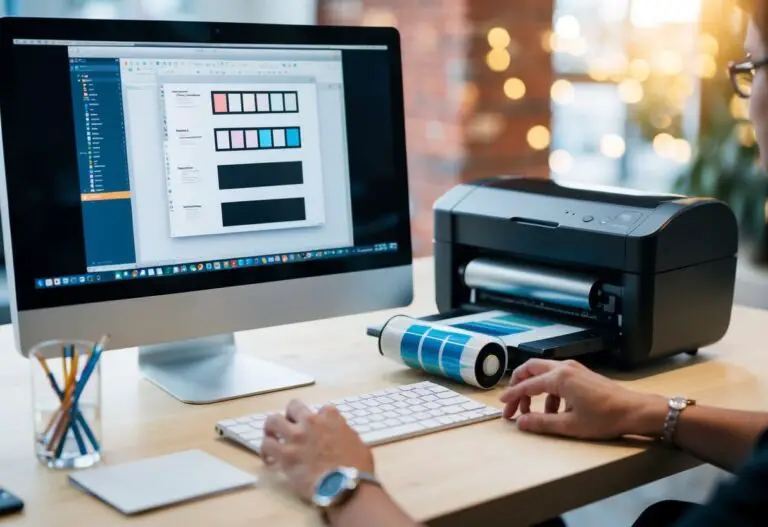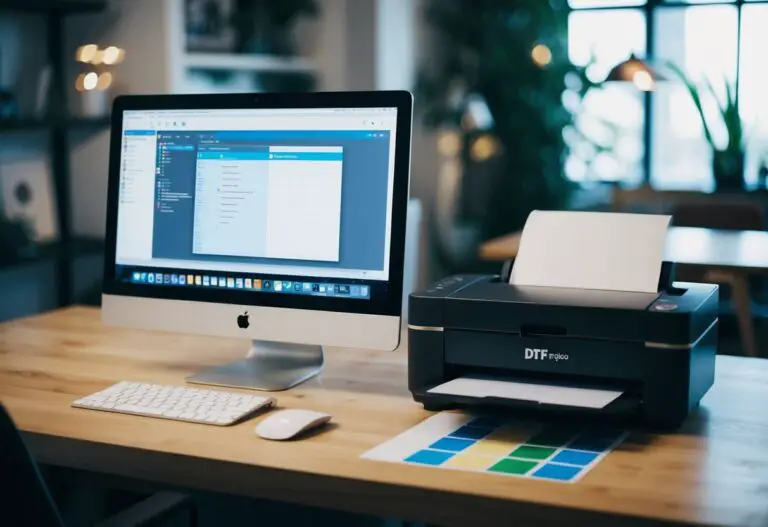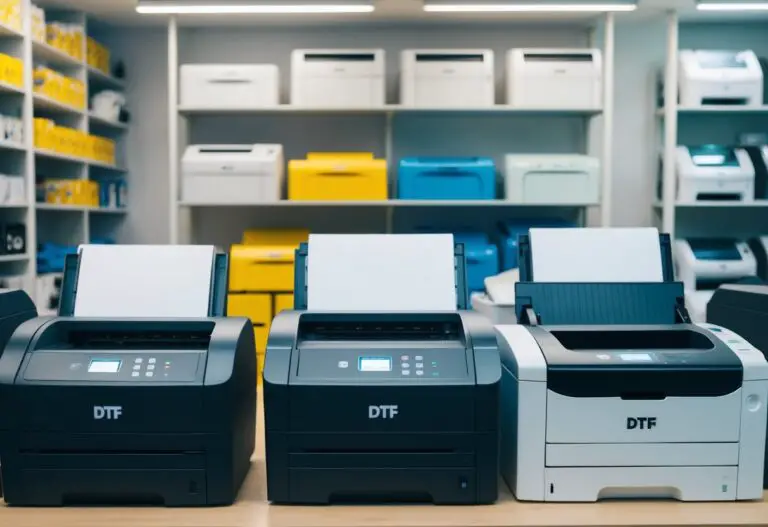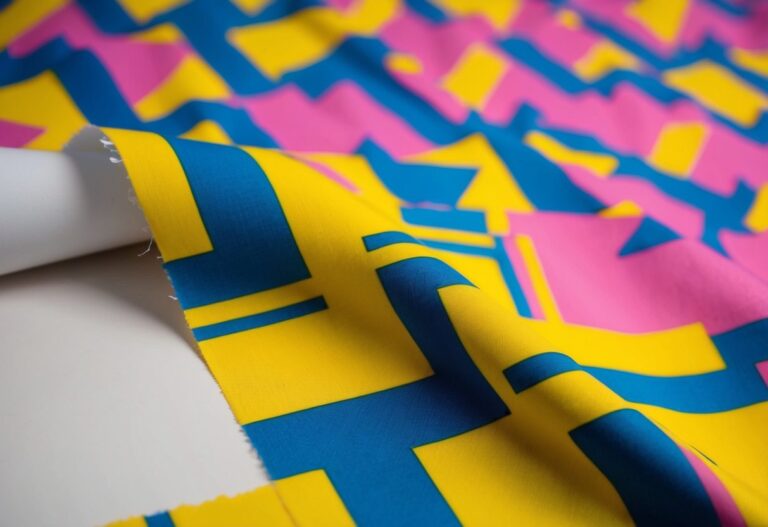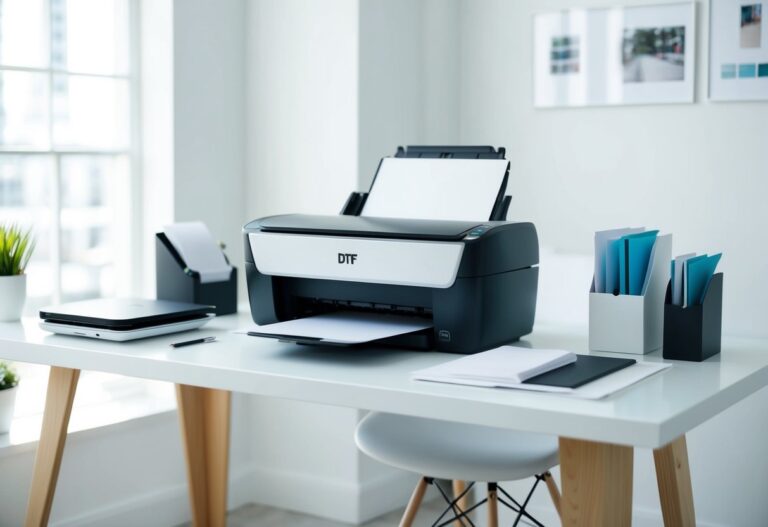Ever wondered what those three letters “DTF” mean in the printing world? You’re not alone! Many people are curious about this new printing method that’s making waves in the industry. DTF stands for Direct-to-Film printing, a process that transfers full-color designs onto various materials.

This exciting technique offers a fresh approach to custom printing. It lets you create vibrant, durable designs on all sorts of items – from t-shirts to tote bags. DTF printing is changing the game for both small businesses and large-scale producers.
Ready to learn more about how DTF printing works and why it might be perfect for your next project? Let’s dive in and explore the ins and outs of this cool printing method!
Key Takeaways
- DTF printing transfers designs from special film to various materials
- It offers vibrant colors and durability for custom-printed items
- DTF is versatile and works well for both small and large-scale projects
How DTF Printing Works
DTF printing is a cool way to put designs on clothes and other stuff. Here’s how it works:
First, you make your design on a computer. You can use programs like Photoshop to create something awesome.
Next, you print your design on a special clear film. The printer uses special inks, including white ink to make colors pop on dark fabrics.
After printing, you sprinkle a powder on the film. This powder helps the design stick to fabric later.
Then comes the fun part! You put the film on your t-shirt or other item. Using a heat press, you apply heat and pressure. This makes the design transfer from the film to your item.
When you peel off the film, your design is now on the fabric. It’s that simple!
DTF printing works on lots of things – t-shirts, hats, bags, and more. You can even print on dark colors, which is pretty neat.
The best part? DTF prints last a long time and can handle many washes without fading.
Advantages of DTF Printing
DTF printing offers many benefits for your custom apparel projects. You’ll love the versatility it provides, allowing you to print on a wide range of fabrics like cotton, polyester, and blends.
Your designs will pop with vibrant colors and high-quality prints that really stand out. These prints are tough too – they can withstand dozens of washes without major fading.
For smaller orders, DTF is a cost-effective choice. You won’t need to worry about minimum order quantities or expensive setup costs.
DTF is also kinder to the environment compared to some other printing methods. This can help you feel good about your production choices.
Need your order fast? DTF has quick turnaround times, so you can get your custom apparel in hand sooner.
With DTF, you can create intricate designs with ease. The process handles fine details well, giving you more creative freedom.
Here are some key advantages of DTF printing:
- Works on many fabric types
- Produces vibrant, long-lasting prints
- Cost-effective for small batches
- Environmentally friendly
- Quick production times
- Allows for detailed designs
Try DTF for your next custom printing project and see the difference for yourself!
Applications of DTF Printing
DTF printing opens up a world of possibilities for custom apparel and more. You can use this versatile method to create eye-catching t-shirts, sporty gear, and unique promotional items.
Want to jazz up your home? DTF transfers work great on pillows, curtains, and other decor pieces. You can even personalize accessories like hats and bags with vibrant designs.
For small businesses and print shops, DTF offers flexibility. You can make custom clothing in small batches without huge setup costs. This makes it perfect for testing new designs or filling special orders.
DTF shines when it comes to detailed, colorful prints. Your logos and artwork will look crisp on light or dark fabrics. Plus, the prints are durable and soft to the touch.
Thinking about starting a merchandise line? DTF can help bring your ideas to life. From band tees to company swag, the options are endless. You’ll be able to offer customers high-quality, custom apparel that stands out from the crowd.
DTF vs. Other Printing Methods
DTF printing has some cool advantages over other methods. Let’s compare it to a few popular options.
DTF vs. DTG printing is an interesting matchup. DTF often wins for print quality on dark fabrics. It’s also great for small orders, while DTG shines for larger runs.
When you look at DTF vs. screen printing, DTF is the champ for setup time. You can start printing faster with DTF. Screen printing needs separate screens for each color, which takes longer to set up.
DTF beats heat transfer vinyl (HTV) for complex designs. You can print more detailed images with DTF. But HTV might last longer on your clothes after many washes.
Here’s a quick comparison:
| Feature | DTF | DTG | Screen Printing | HTV |
|---|---|---|---|---|
| Setup time | Fast | Medium | Slow | Fast |
| Best for | Small-medium orders | Large orders | Large orders | Simple designs |
| Detail level | High | High | Medium | Low |
DTF also works well on different fabrics like cotton, polyester, and blends. This makes it super flexible for various projects.
Remember, each method has its strengths. The best choice depends on what you’re printing and how many items you need.
DTF Printing Materials and Supplies
To get started with DTF printing, you’ll need a few key supplies. First, you’ll want a DTF printer. These come in different sizes and price ranges to fit your needs. Popular brands offer models from a few thousand dollars up to $10,000 or more for industrial machines.
The special PET film is crucial for DTF printing. This clear, thin plastic sheet is what you’ll print your designs on before transferring them. Make sure to get film made specifically for DTF printing.
You’ll also need DTF inks, including white ink for printing on dark fabrics. These inks are different from regular printer ink, so be sure to use the right type.
DTF powder adhesive is another essential item. This fine powder helps the design stick to fabrics when heat is applied. You’ll sprinkle it on your printed design before transferring.
Don’t forget about the heat press! This machine applies heat and pressure to transfer your design from the film to the fabric. Look for one that can reach the right temperature for DTF transfers.
Other helpful items include:
• RIP software to process your designs
• Graphic design software like Illustrator
• Extra PET film and powder
• Fabric to print on (cotton, polyester, nylon, etc.)
With these supplies, you’ll be ready to start creating awesome DTF prints on all kinds of materials!
Frequently Asked Questions
DTF printing has some key differences from other techniques. Let’s look at how it compares to sublimation, its print quality, and equipment needs.
How does DTF printing compare to sublimation techniques?
DTF printing works on many fabric types, while sublimation is best for polyester. DTF uses special film and powder to transfer designs. Sublimation uses heat to embed ink into the fabric.
DTF prints can be more durable and work on dark fabrics. Sublimation gives vibrant colors but only on light-colored polyester items.
Can you explain if DTF printing delivers high-quality results?
Yes, DTF printing can give very good quality prints. The designs are sharp and the colors are bright. DTF prints last a long time without fading or cracking.
You can get detailed images and smooth color blends with DTF. The prints feel soft on the fabric and don’t peel off easily.
Is it possible to use a standard printer for DTF printing?
No, you can’t use a regular printer for DTF. You need a special DTF printer that uses special DTF inks. These printers are made to print on the transfer film used in DTF.
You also need other tools like a heat press and adhesive powder. A standard printer won’t work with the film or inks needed for DTF printing.
